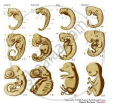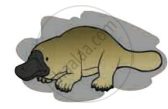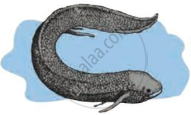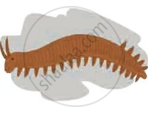Advertisements
Advertisements
प्रश्न
What is carbon dating?
उत्तर
- Carbon consumption of animals and plants stops after death and only the decaying processes of C-14 take place continuously.
- The ratio of C-14 to C-12 changes constantly with time as C-12 is nonradioactive in dead plants and animals.
- The time passed since the death of a plant or animal can be calculated by carbon dating i.e. by measuring the radioactivity of C-14 and the ratio of C-14 to C-12 present in the remains of the dead organism.
APPEARS IN
संबंधित प्रश्न
(a) Select the homologous structures from the combinations given below:
(i) Forelimbs of whales and bats
(ii) Tuber of potato and sweet potato
(iii) Eyes of octopus and mammals
(iv) Thorns of Bougainvillea and tendrils of Cucurbita
(b) State the kind of evolution they represent.
Which of the following pairs of two vegetables represent the correct homologous structures?
(A) Sweet potato and potato
(B) Sweet potato and tomato
(C) Carrot and potato
(D) Radish and carrot
If you are asked to select a group of two vegetables, out of the following, having homologous structures which one would you select?
(a) Carrot and radish
(b) Potato and sweet potato
(c) Potato and tomato
(d) Lady finger and potato
Differentiate between analogy and homology giving one example each of plant and animal respectively.
Can the wing of a butterfly and the wing of a bat be considered homologous organs? Why or why not?
Explain with an example for the given, how the following provides evidence in favor of evolution in organisms :
Fossils
Explain the evolution of giraffe's neck according to Lamarck's theory of evolution.
What are homologous organs?
How do homologous organs help in providing evidence for organic evolution?
Human tailbone is a vestigial organ. Explain.
Name two animals having homologous organs and two having analogous organs. Name these organs.
Select a set of homologous organs from the following:
(A) Wings of a bat and wings of a butterfly
(B) Wings of a pigeon and wings of a bat
(C) Wings of a butterfly and wings of a pigeon
(D) Forelimbs of a duck, forelimbs of a cow and forelimbs of a lizard
In a class, students were asked to observe the models/slides/pictures of the skeletons of forelimbs and wings of different organisms. After the observations the students made the following groups of homologous structures. Select the correct group :
(A) Wings of a bird and a butterfly
(B) Wings of a pigeon and a bat
(C) Wings of a butterfly and a bat
(D) Forelimbs of a cow, a duck and a lizard
Read the following statement and justify same in your own words with the help of suitable example.
There is evidences of fatal science among chordates.
Observe the picture and answer the following questions.
A) Which evidence of evolution is shown in the picture?
B) What can be proven with this proof?
C) Give one more example of evidence of evolution
“Appearance of melanised moths post-industrialisation in England is a classic example of evolution by natural selection.” Explain.
With the help of diagrams, describe emasculation and bagging.
The most common types of fossils are ------------------------.
Short answer question.
Give the significance of fossils.
_____________ is a vestigial organ in human beings.
I am a connecting link between reptiles and mammals. Who am I?
Name the parts shown in the diagram.
Human jaw

Appendix : vestigial organ : : Peripatus : ____________
Match the following.
| Column A | Column B |
| 1) Morphological evidences | a) Tail-bone or wisdom teeth |
| 2) Paleontological evidences | b) Leaf venation |
| c) Fossils |
Write a short note:
Embryological evidences
Which evidence of evolution is shown in the given picture? Explain the importance of this evidence.

Write the answers to the questions by observing the figure below.
 |
 |
 |
| (a) | (b) | (c) |
- Write the name of the animal ‘(a)’ in the figure.
- Write the name of the animal ‘(b)’ in the figure.
- Write the name of the animal ‘(c)’ in the figure.
- Which evolutionary evidence is illustrated by this figure?
- Write the definition of that evidence for evolution.
Biogenetic law states that ______.
A human hand, a front leg of a cat, a front flipper of a whale and a bat’s wing look dissimilar and adapted for different functions. What is the name given to these organs?
Select the correct statement.
Evolution has exhibited a greater stability of molecular structure when compared with morphological structures. Comment on the statement and justify your opinion.
The process of mating of individuals, which are more closing related than the average of the population to which they belong is called ______.
The study of fossil evidence of evolution is called ______
Explain divergent evolution in detail. What is the driving force behind it?
Complete the following diagram:

Write a note on the significance of Palaeontology.
Give examples of homologous organs and analogous organs in plants.
